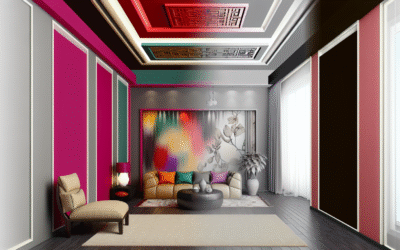
In the evolving landscape of modern homes, apartments, and urban living, space is an ever-precious commodity. Many of us find ourselves grappling with the challenge of making the most out of every square foot, especially when it comes to creating functional yet inviting spaces for essential activities like dining. If you’ve ever felt that your dining dreams are bigger than your floor plan, you’re not alone. The quest for seamless integration of style and practicality in limited confines is a common one, particularly when designing a comfortable eating area.
This comprehensive guide delves deep into the world of small space solutions for compact dining areas, offering a treasure trove of innovative ideas and practical strategies. We’re not just talking about shrinking your table; we’re exploring a holistic approach to maximizing utility, enhancing aesthetics, and fostering a truly pleasant dining experience, regardless of how snug your home might be. From multi-functional furniture to ingenious layout techniques and smart storage, we’ll equip you with the knowledge to transform even the tightest spots into surprisingly spacious and inviting dining havens.
Prepare to discover how thoughtful design, clever furniture choices, and smart spatial planning can unlock untold potential in your home. By the end of this read, you’ll be able to envision and implement a dining area that feels expansive, serves all your needs, and beautifully complements your living space, proving that great design knows no size limits. Let’s start by understanding the common challenges we face when carving out dining zones in smaller homes.
The Compact Dining Conundrum: Understanding Your Space
Before we dive into an array of ingenious small space solutions for compact dining areas, it’s crucial to first understand the specific obstacles and opportunities presented by limited square footage. It’s not merely about having less room; it’s about rethinking traditional conventions and embracing creativity. Many homeowners face similar dilemmas when trying to establish a dedicated eating zone in a studio apartment, a cozy condo, or a house with an open-plan layout where every zone bleeds into the next.
Identifying Common Challenges in Small Dining Spaces
What exactly makes designing compact dining areas such a head-scratcher? Often, it boils down to a few key pain points that designers and homeowners consistently encounter:
-
- Traffic Flow Obstruction: A dining table, especially one that’s too large, can quickly become a bottleneck, impeding movement between living areas, kitchens, or doorways. Navigating around it becomes a daily obstacle course.
-
- Lack of Dedicated Zone: In open-plan designs, finding a sense of separation for the dining area without permanent walls can be tricky. It often feels like the dining zone is undefined, blending into other functions.
-
- Insufficient Storage: Dining areas, regardless of size, often require storage for dinnerware, linens, or even entertaining essentials. Compact spaces rarely have built-in solutions, leading to clutter.
-
- Visual Clutter and Overwhelm: Too much furniture, mismatched pieces, or poor organization can make a small dining area feel even smaller and visually chaotic, leading to a sense of being cooped up.
-
- Limited Seating Options: Traditional dining sets often don’t scale down well. Finding seating that accommodates guests comfortably without monopolizing floor space is a common hurdle.
-
- Multi-functional Demands: For many, the dining table isn’t just for eating; it’s a home office, a kids’ homework station, a crafting zone. This multi-purpose demand puts extra pressure on its design and adaptability.
Assessing Your Space: Beyond Just Square Footage
To effectively implement small space solutions for compact dining areas, you need to conduct a thorough audit of your specific environment. It’s more than just measuring the floor; consider these elements:
Spatial Dimensions and Pathways
-
- Measure Everything: Get precise measurements of the available floor space. Don’t forget ceiling height, as vertical space is your secret weapon.
-
- Map Traffic Patterns: Observe how people move through your home. Identify natural pathways and ensure your dining setup doesn’t block them. Aim for at least 36 inches of clear space around the table for comfortable movement.
-
- Wall Real Estate: Are there empty walls that could support shelving, wall-mounted tables, or even art to define the space?
Existing Furniture and Layout
-
- What Stays, What Goes?: Evaluate existing furniture. Can anything be repurposed or moved to create more room for dining? Sometimes, shifting a sofa by a few inches can make all the difference.
-
- Proximity to Kitchen: Optimizing the distance between the kitchen and dining area is key for convenience. Can you position your dining solution close by without infringing on kitchen workflow?
-
- Natural Light and Views: Where are your windows? Can you position your dining area to take advantage of natural light and pleasant views, making the space feel larger and more inviting?
Your Lifestyle and Needs
-
- How Often Do You Dine At Home?: Do you eat most meals out, or is your dining table a daily anchor? This dictates the prominence and durability required.
-
- Number of Regular Diners: Is it just you and a partner, or do you frequently host small gatherings? This will influence seating capacity needs.
-
- Additional Functions: Besides eating, what else will your dining table be used for? Homework? Board games? A temporary workspace? Its multi-functional role is critical for choosing the right small space solutions.
-
- Aesthetic Preferences: What’s your personal style? Modern, minimalist, rustic, eclectic? Your aesthetic should guide your material and design choices, ensuring the compact dining area feels like a natural extension of your home.
By thoroughly understanding these challenges and meticulously assessing your space and lifestyle, you’ll be well-prepared to select and implement the most effective small space solutions for compact dining areas. This foundational knowledge is key to turning limitations into opportunities for clever, beautiful design.
Categories
- Accent Walls & Ceilings (61)
- Art Curation & Gallery (62)
- Bedding Style Trends (68)
- Bedroom Makeover (81)
- Bohemian & Eclectic Styles (58)
- DIY & Budget-Friendly Decor (64)
- Eco-Friendly Design (62)
- Furniture Care (71)
- Home Decor & Design Ideas (162)
- Home Wellness Spaces (59)
- Integrated Outdoor Living (67)
- Japandi Style (61)
- Kids and Nursery Decor (59)
- Living Room Decor (79)
- Mix & Match Techniques (73)
- Modern & Contemporary Design (66)
- Rug Sizing & Placement (73)
- Scandinavian Design Inspiration (20)
- Seasonal Home Decor (79)
- Small Space Solutions (73)
- Wall Art & Painting Tips (77)
Recent Comments
Archives
Product Gallery
-
Large Area Green Rugs for Bedroom Nordic Living Room Decoration Shaped Carpet Irregular Plush Lounge Rug Home Thick Washable Mat
Rated 5.00 out of 5$36.00 – $225.00Price range: $36.00 through $225.00 -
Nordic Style Rugs for Bedroom Morandi Living Room Decoration Carpet Large Area Geometry Lounge Rug Home Cloakroom Non-slip Mat
Rated 5.00 out of 5$26.00 – $387.00Price range: $26.00 through $387.00 -
Irregular Shapes Living Room Decoration Carpet Modern Style Rugs for Bedroom Home Thicken Plush Rug Fluffy Soft Lounge Floor Mat
Rated 4.83 out of 5$37.00 – $225.00Price range: $37.00 through $225.00














